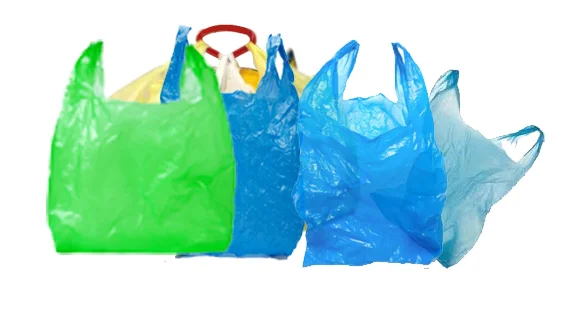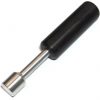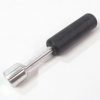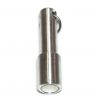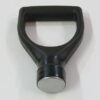E-Waste is an Untapped Goldmine Waiting to Be Harnessed
January 09, 2025 01:00:23 PM
The reason behind tetrathiafulvalene (TTF)-COF's superior gold absorption is that the compound is rich in sulfur. And sulfur plays a key role in forming gold deposits.
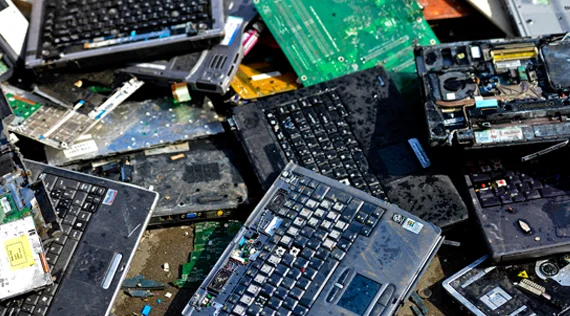
SEATTLE (Scrap Monster): What if you could turn waste into literal gold? Well, a research team from Cornell has actually found a way to do that.
The latest research, which was published in Nature Communications in the last couple of days of 2024, presented a technique to extract precious metals from e-waste. The recovered gold was then used as a catalyst to convert CO2 to organic materials.
The newly developed method showcases a great potential to change the landscape of e-waste by providing a green and viable use of it. But before we get into how researchers are turning e-waste into gold, let's take a look at the electronics waste situation and just how much of this waste is out there.
The Rapidly Rising Toxic e-Waste
Electronic waste or e-waste refers to electronics products that are not working, are nearing the end of their ‘useful life,' or are simply unwanted. It is basically the discarded electronics.
Interestingly, it's not just those electronics that have stopped working that fall under the e-waste category. However, even used electronic devices that are to be reused, resold, refurbished, or recycled are considered e-waste.
The United States Environmental Protection Agency (EPA) actually classifies e-waste into ten categories — large household appliances, small household appliances, IT equipment, consumer electronics, lamps and luminaires, toys, tools, medical devices, monitoring instruments, and automatic dispensers.
In today's age of technological advancement that is giving rise to more sophisticated, innovative products, the definition of e-waste is likely to continue to expand.
For now, from your smartphones, computers, heaters, and fans to printers, massage chairs, remote controls, treadmills, smart watches, heart monitors, cables, and power supplies, they all come under electronics waste.
All this e-waste, according to the Global E-waste Monitor (GEM) from the UN, is increasing five times more rapidly than it is being recycled.
In 2022, 62 million tonnes of e-waste was generated worldwide, while not even one-quarter of it has been recorded as being appropriately collected and recycled. The generation of 62 million tonnes is equal to the weight of 107,000 of the world's largest and heaviest passenger aircraft.
In terms of category, small devices like e-cigarettes, toys, microwave ovens, and vacuum cleaners accounted for 33% of the e-waste, of which only 12% are recycled. The small IT and telecommunication equipment category, which includes your phones, laptops, routers, and GPS devices, accounted for 4.6 million tonnes of e-waste, of which only 22% is recycled.
The rate of collection and reuse is actually highest for sizable equipment classes such as monitors and temperature exchange equipment.
According to the report, the estimated weight of metals embedded in e-waste in 2022 was 31 million tonnes, along with 17 million tonnes of plastics and 14 million tonnes of other materials such as glass and minerals.
When it comes to the metals embedded in e-waste, their total value was $91 billion, which included $19 bln in copper, $15 bln in gold, and $16 bln in iron.
The annual generation of e-waste worldwide, the report noted, is currently rising by 2.6 million tonnes annually, which puts it on track to reach 82 million tonnes by the end of this decade. The expected mass of retired photovoltaic panels is expected to increase four times by 2030.
While the report predicts a substantial increase in e-waste, it also forecasts a drop in the recycling rate to 20% by 2030 from 22.3% recorded in 2022.
This drop is expected due to the growing difference in recycling efforts in relation to the shocking rise in e-waste generation worldwide. The report highlighted higher consumption, the growing electronification of society, technological progress, design shortcomings, limited repair options, and insufficient infrastructure for the management of e-waste.
However, if nations could increase the rate of collection and recycling of e-waste to 60% in the next five years, its benefits will surpass costs by more than $38 billion.
That number, however, doesn't seem a possibility given that implementation of e-waste legislation “remains a genuine challenge globally.” As the report noted, the slow rate of recycling is likely to be fueled by the fact that just 46 countries have collection rate targets, and even fewer have recycling rate targets.
Also, while 81 countries had e-waste legislation in 2023, this wasn't really much of a growth from the numbers (78) recorded four years before that.
Not only is electronic waste rising, as we stated, but it is also extremely toxic. About 70% of toxic waste in landfills is actually e-waste.
This is because most electronics contain some form of toxic materials, including mercury, lead, cadmium, and beryllium. And all these materials pose serious risks to our environment.
Much like other wastes, e-waste doesn't stop at just landfills either. When e-waste is sent to landfills, it dissolves in microscopic traces and permeates there, eventually seeping into the ground from where the traces of toxic materials show up in the groundwater. Then, it continues into the freshwater in the surrounding area.
So, if not recycled appropriately, e-waste can become a threat to both the environment and our health. Recycling through unsound activities such as dumping on land or in water bodies, openly burning, landfilling with regular waste, manual disassembly, and others also releases toxic chemical substances, to which children and pregnant women are particularly vulnerable.
Turning e-Waste into Gold & Achieving Sustainability
Now, with so much e-waste piling up, which, as we saw, contains a lot of gold, researchers are turning to killing two birds with one stone.
Gold (Au) is a precious metal that has several qualities that make it extremely valuable. This yellow metal is highly malleable and very durable. Gold is found in nature in comparatively pure form, and it has many use cases, including in technology. Yellow metal is used in smartphones, computers, and medical equipment because it is non-corrosive and the best conductor of electricity.
In medicine, gold nanoparticles improve diagnostics and deliver targeted treatments, and their biocompatibility makes them a great element for surgical tools and implants. Besides being used in aerospace and decorative products like jewelry, gold is a wildly popular way of protecting wealth.
For centuries, investors have been turning to this metal as a safe-haven asset during times of crisis, economic uncertainty, and political instability. Even central banks hold gold as a way to stabilize their fiat currencies.
As of writing, gold is worth $2,664 per ounce, just 4.5% away from its peak of $2,790 hit late in Oct. 2024.
This sought-after natural resource, however, is extracted using a slow, complex, and expensive process that is time-consuming, energy-intensive, and requires environmental sacrifice. To minimize its environmental impact, gold recycling has emerged as a sustainable alternative, with around 25% of the world's gold now being recycled.
Amidst this shift towards a more sustainable approach, defective electronics, as the study points out, “represent a valuable reservoir for gold recovery.”
With the wide use cases of gold, rising demand, and recycled gold gaining traction due to consumers becoming more eco-diligent, there is now a need to have innovative methods to recover precious metals from e-waste.
Gold recycling makes use of advanced techniques where gold is separated from other materials through chemical processes. This is what helps achieve the purity of recycled gold.
Conventionally, harsh chemicals are used to recover gold from e-waste, which is estimated to contain about 10 times more gold than what can be extracted from a ton of ore. These harsh chemicals include cyanide, a highly toxic chemical that poses severe environmental risks.
The team led by Cornell University researchers in collaboration with German researchers developed a method that doesn't use any hazardous chemicals but rather makes use of chemical adsorption to recover gold from electronics waste.
The researchers synthesized two lightweight, easy-to-manufacture tetrazine-based vinyl-linked covalent organic frameworks (VCOFs) to extract gold ions and particles from discarded electronic devices' circuit boards. Besides adsorbing gold particles, these VCOFs that have high photocurrent responses and low band gaps also catalyze the carboxylation of terminal alkynes.
Covalent organic frameworks (COFs) are porous crystalline materials that have various potential uses, including energy storage and chemical sensing. The team manufactured a pair of VCOFs using the foundation of tetraphenylethylene (TPE) and tetrathiafulvalene (TTF).
According to the study, the aqueous Au(III) adsorption capacity of TTF-COF is 2440 mg g–1, while that of TPE-COF's Au(III) is 1639 mg g–1.
So, the results achieved by the team were spectacular, with one of the VCOFs selectively capturing as much as 99.9% of the gold from the devices. Other metals like nickel (Ni) and copper (Cu) amounted to very little of the recovered material, only 5% and 2%, respectively.
The reason behind tetrathiafulvalene (TTF)-COF's superior gold absorption is that the compound is rich in sulfur. And sulfur plays a key role in forming gold deposits.
So, it makes sense that organosulfur compounds displayed such high adsorption capacity. But that's not all. The TTF-COF is also able to go through as many as 16 washings and reuses while losing little of its adsorption efficiency.
Talking about the selectivity of the method, Abbaspourrad noted that other gold-recovering methods aren't selective. Hence, they result in impurities. However, given the high amount of precious metals used in electronic devices, “being able to recover them in a way where you can selectively capture the metal you want – in this case, gold – is very important.”
However, this is not the end of what the newly created method can achieve. The goal-loaded COFs can then be used to convert e-waste into a “valuable catalyst for a useful green organic transformation.”
Courtesy: www.securities.io
 By
By 